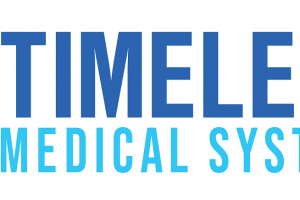HIMSSCast: What to expect from 2021 health tech news
HIMSSCast is back from a short holiday hiatus with our first annual predictions podcast. In this episode, host Jonah Comstock, Healthcare IT News Executive Editor Mike Miliard, Healthcare Finance News Managing Editor Susan Morse, and MobiHealthNews Managing Editor Laura Lovett engage in a roundtable discussion of trends and predictions for each of their respective coverage areas.
Here are the major issues facing healthcare in 2021, according to PwC
Will a health system battered by the pandemic emerge stronger in the year ahead? The annual report predicts challenges such as profitably merging virtual and in-person care, and capitalizing on new consumer- and clinician-facing digital health tools.
The healthcare industry has six big challenges ahead in 2021: rightsizing after the telehealth explosion; adjusting to changing clinical trials; encouraging digital relationships that ease physician burdens; forecasting for an uncertain 2021; reshaping health portfolios for growth; and building a resilient and responsive supply chain for long-term health.
This is according to a new annual report from research and consulting giant PwC entitled “Top health industry issues of 2021: Will a shocked system emerge stronger?”
For this report, PwC’s Health Research Institute surveyed 2,511 American consumers, 128 health plan executives, 153 healthcare provider organization executives, and 124 pharmaceutical and life sciences executives in August and September 2020. HRI also interviewed numerous thought leaders from throughout the industry and frontline clinicians to understand their on-the-ground experiences during a historic year.
“While in 2020 many healthcare organizations saw their financial plans obliterated, patient behaviors radically shift and virtual care explode, in 2021 they will work to put the system back together,” said PwC researchers. “Not to how it always was – but in a way that reimagines healthcare delivery, reconnects broken pathways and makes a giant leap toward a consumer-centric healthcare system.”
Nearly overnight, as volumes dropped precipitously, the deadly pandemic thrust patients, doctors, pharmaceutical companies and payers headfirst onto virtual platforms and other digital technologies that many had previously approached with hesitation, according to the report.
That sudden experiment allowed for valuable insights that healthcare organizations in 2021 can use to fine-tune where they should land on the spectrum of virtual and in-person – in ways that make the most sense for care delivery, patient experience, reimbursement and clinical research.
The insights also can help healthcare organizations navigate vaccine distribution, as well as the ebbs and flows of patient volumes due to COVID-19 in the year ahead, according to the new report.
Healthcare right-sizes after the telemedicine explosion
The pandemic generated uneven experiences for millions of Americans as physicians, therapists, nurse practitioners, hospitals and other caregivers – all coming to telehealth with varying levels of experience themselves – tried suddenly to meet patients where they were, said PwC researchers.
Some virtual visits happened on nontraditional mobile platforms, on personal phones, through texts and through messaging platforms more often used for sharing family photos or Internet memes, it explained.
Clinical trials are changing – for good
Elsewhere in healthcare, the world of clinical trials looks to be up for some big changes – and permanent ones at that, HRI predicted.
“In the face of a pandemic that forced nearly everyone, from patients to clinical trial coordinators, to stay home, at least temporarily, pharmaceutical and life sciences companies have been asking: How much can be done remotely?” the report read. “Quite a bit, it turns out. Forced to minimize in-person clinical trial visits, these companies are now trying to find ways to conduct trials with few in-person interactions.”
The COVID-19 crisis has increased the appetite for change across the industry as sponsors, contract research organizations and patients see benefits in a more decentralized model, HRI noted. The virtual trial, to be sure, is not a new concept: One team of researchers counted more than 1,100 trials listed on ClinicalTrials.gov employing connected digital products for remote data collection in both 2017 and 2018, the organization observed.
Digital relationships that ease physician burdens
Until now, the healthcare industry has focused more on ease and simplicity of technology solutions for consumers, and less for the clinicians who treat them, HRI contended. That may be changing in 2021, it predicted.
“Nearly all respondents to HRI’s survey – 94% of provider executives, 92% of life sciences executives and 91% of health plan executives – said improving the clinician experience is a priority for their organizations as they enter 2021,” the report read. “Digital technology, if made right, could be the antidote to countless pain points that physicians encounter every day, leading to more efficient and satisfied doctors, happier patients, and more patient referrals.”
Healthcare forecasting for an uncertain 2021
A healthcare industry that found itself fighting in the dark during the opening waves of the pandemic will need a forecasting system that provides a lens for the uncertainty ahead, HRI suggested. Better sightlines can help healthcare companies prepare for shifts in the insurance market, the economy, utilization, consumer behavior and future waves of infectious disease, it added.
“Seventy-four percent of health executives responding to HRI’s survey said their organizations would invest more in predictive modeling in 2021,” researchers said. “This capability to forecast the future could be as important to healthcare survival in 2021 as a mask may be for slowing the spread.
They need real-time insights to create the healthcare industry’s own forecasting system to alert healthcare leaders to the shifting fronts that may have a major impact on their business, the report read. As the pandemic experience varies at different times across different regions of the country, local partnerships between healthcare providers, payers, community groups and government agencies can help power a more informed response, it added.
“A CEO flight simulator relies on advanced analytics and modeling,” the report read. “The industry has been missing the equivalent of a CEO flight simulator to help health leaders identify warning signs early, so they can be prepared to make quick decisions when necessary, while also allowing for dynamic strategic planning. HRI’s survey found that provider and life sciences executives believe they are reasonably able to understand their supplies and workforce, but they feel they have less of a vision into predicting supply and demand.”
Health portfolios reshaped for growth
The COVID-19 pandemic placed some companies in a position to invest and evolve, and others needing to partner to survive, HRI observed. The shock of the pandemic has highlighted the need for many healthcare organizations to diversify their capabilities and revenue streams to be more resilient, readying for impactful court decisions, increased focus on pricing and price transparency, and the unknown, it said.
“Some companies, as they better understand the impact of COVID-19 on their business, are expected to return to driving their pre-pandemic growth agendas,” the report said. “In 2021, HRI expects to see increased investment in and by healthcare companies to shore up gaps exposed by the pandemic and position them for growth.”
“The industry will have to balance the challenges of pressing for innovations while battling the uncertainty of a deadly pandemic and the economy,” the report said. “It should work to right the wrongs of institutional inequities that have disadvantaged communities of color, whether through COVID-19 or through basic lack of access to care.”
It should root itself in processes and systems that work for clinicians and consumers, while improving mental health care for both, the report read. It should strengthen its infrastructure to better weather the next crisis, it added.
“Winners in 2021 are expected to determine how to profitably merge virtual and in-person care, and weave in the digital tools that improve consumer and clinician relationships while enabling pharmaceutical companies to find their new footing in the blended virtual-physical visit and clinical trials,” the report concluded.
“They will strike partnerships that strengthen their portfolios and will rebuild their supply chains. The result is likely to lead to more reflective research, more resilient operations, next-generation care delivery and, most importantly, better health for all.”
Source : Healthcare


































